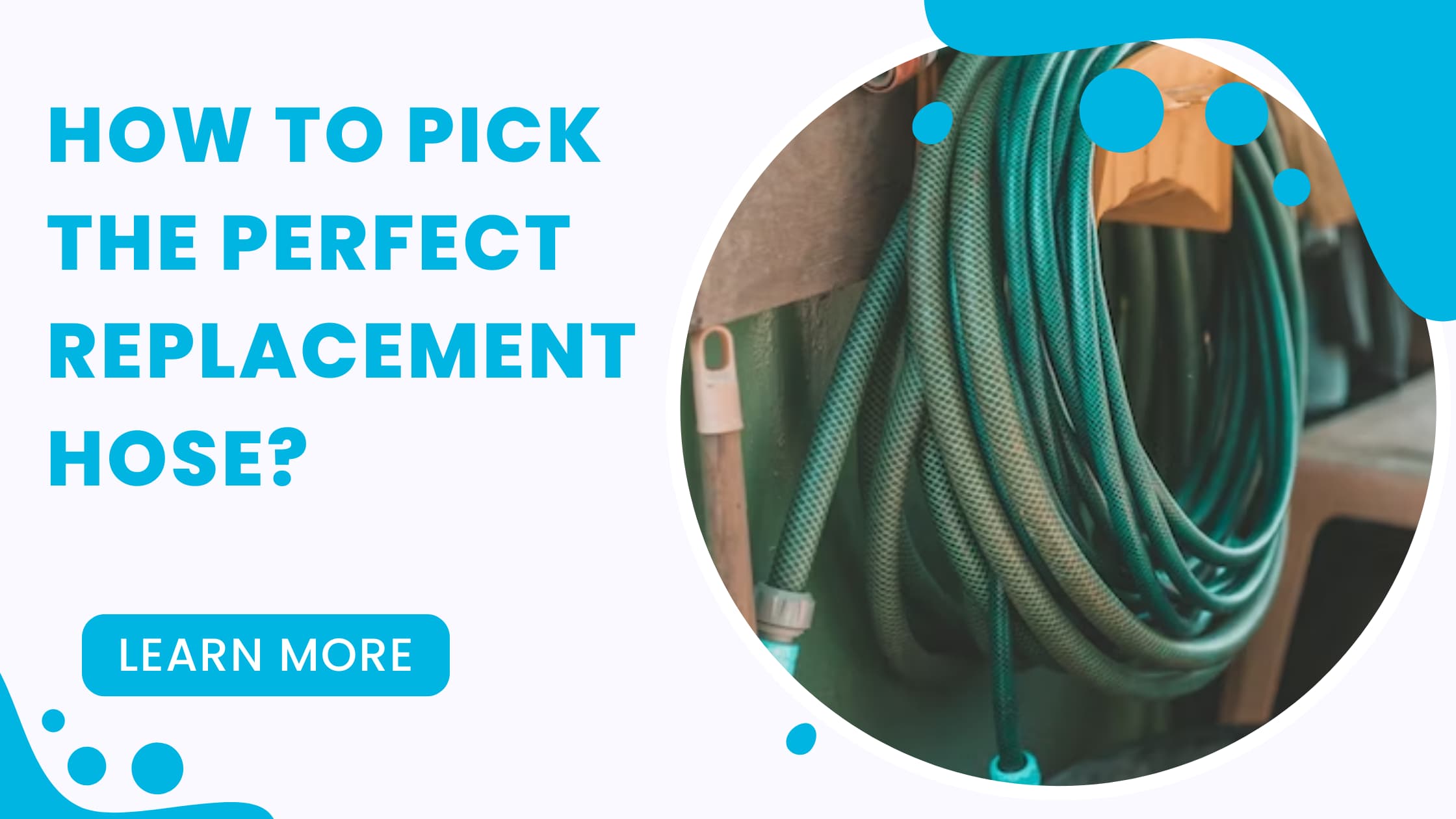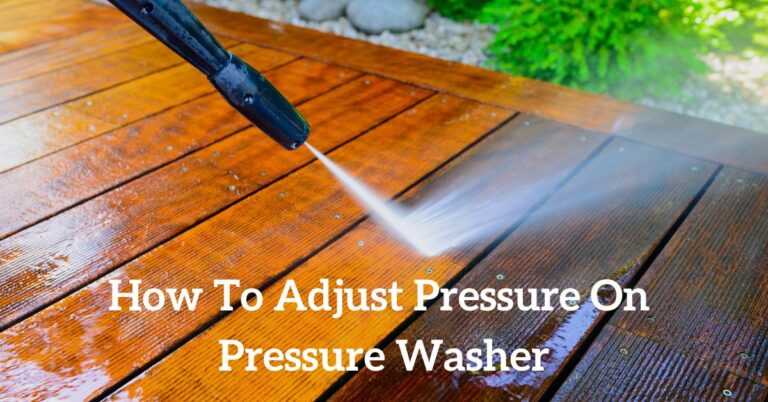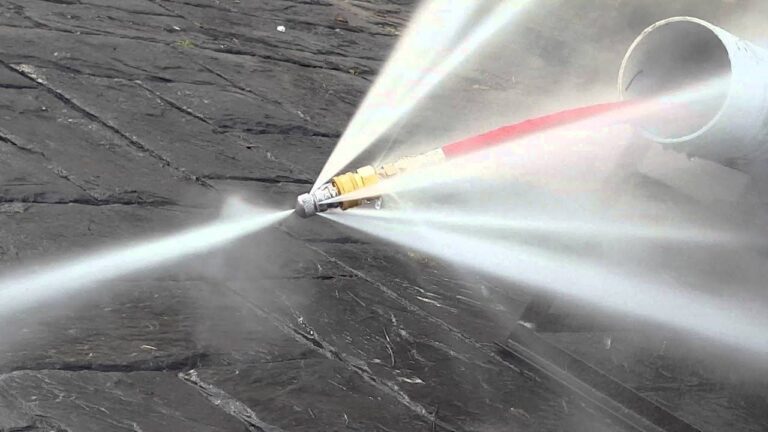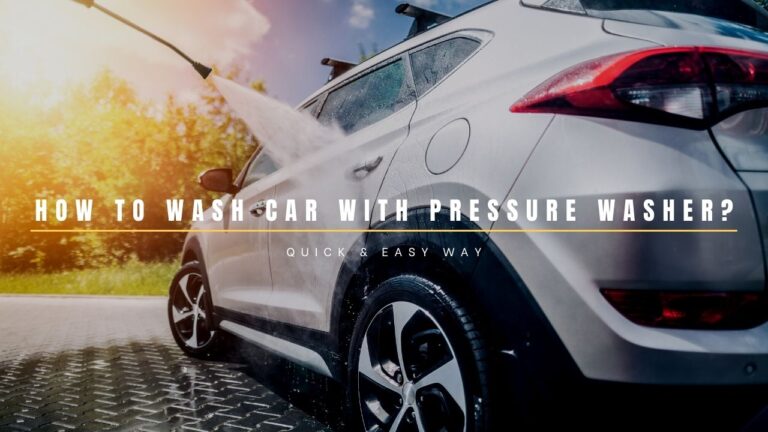How to Pick the Perfect Replacement Hose?
Whether it is a replacement hose for your pressure washer or the garden hose, several questions will go through your mind. What material should I choose; what length will I need; will diameter matter?
It is important to have a nice idea of, at the very least, the questions posed above. Because, my friend, hoses aren’t universal. And if you get stuck with a cheap hose or one unfit for your specific usage, you will waste your money.
Yes, even if you managed to grab one on an awesome deal – several replacement hoses will cost more in the long run than a single but great water hose.
Replacement Hose – Can You Get Just Any?
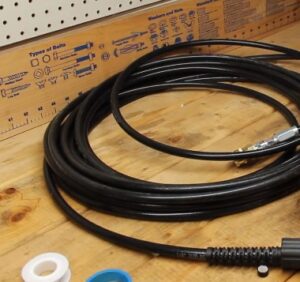
Hoses take plenty of beating over time; they get dragged, twisted, and dropped constantly. And the conditions are even tougher on the pressure washer’s hose: they have to contain and deliver water at elevated pressures.
Therefore, you can’t just use any replacement hose; you must choose one according to their application.
Otherwise, you will end up with subpar performance. Either that, or you might not be able to connect the hose at all. And even if you managed to, you might still suffer from the most common ailments with hoses and pipes – water leaks!
(And no, duct tape doesn’t work – been there, done that 😔)
How To Choose The Replacement Hose?
The consequences of the beating that hoses go through over time (even during casual usage), a replacement is inevitable. But the problem is that you might not be familiar with your options, especially when the original pressure washer hose was chosen for you by the manufacturer.
The good news is that choosing a replacement hose boils down to 3 factors – diameter, length, and material. For good measure, let’s say 4 – the connections.
Knowing how these factors are relevant will help you get the right water hose and save big bucks without causing huge water bills. And if you happen to own a pressure washer, the right replacement hose will upgrade its performance.
With that said, here are the four factors you need to consider to pick the perfect replacement hose:
4 Features Of A Water Hose
Hose’s Diameter
Choosing the hose’s diameter is quite simple. There’s practically a single option each for both consumer-grade and commercial pressure washers.
Small – 1/4’’
The small hoses are the most common and are designed for consumer-grade electric and smaller gas pressure washers. You can also use these as garden hoses (you must look for ones with the proper connections).
These can handle pressures up to 3,000-3,200 PSI – plenty for small pressure washers.
Large – 3/8’’
These are used with heavy-duty units because they can withstand whoppingly high pressures of up to 10,000 PSI. Therefore, these are used with professional-grade pressure washers; that too, the gas pressure washers as electric pressure washers are rarely up for such a demanding task.
These are much thicker to accommodate the greater water volume (GPM) to be delivered through them. Due to their high specs are chosen almost always when the demand exceeds small hoses’ capabilities.
Mid-Sized – 5/16’’
No, we didn’t make a mistake when putting mid-sized after large instead of in the middle. This is because mid ones are the rarest ones, with only 1 appearing in the top 50 hoses.
They can withstand pressures between 2,700-3,600 PSI – which is only about 400-600 PSI more than the capability of small hoses. And frankly, the 2,700-3,600 PSI range has very limited applications.
Therefore, most users prefer either the small hoses or the large ones, and the mid-sized ones often end up getting skipped.
If you want your replacement hose’s diameter to be the same as your current one, and you’re unsure about the diameter, look it up in the user manual. You can also find the information online by looking up your pressure washer model. You can bring the hose to the shop for expert help if all else fails.
Length
For a “replacement” hose, you might already have an idea about the required length. If you’re washing in your driveway, smaller 25 feet would have been plenty for you. If it’s the 2nd story windows, perhaps 50 feet would do the job.
Commercial units can benefit greatly from 100-foot hoses. This length can make cleaning jobs much easier – stop dragging your setup across the job site and walk freely where you need to work.
Consumer-grade pressure washers typically have a 25-foot length of included hoses. The idea is that it can be plenty with the included electrical cord of about similar length. Or, rolling them might eliminate the need for extra hose length for smaller gas-pressure washers.
However, we believe a 50-feet length for replacement hose is also a nice and safe option for consumer-grade pressure washers.
Material
Knowing the material of the replacement hose is important for three main reasons – durability, flexibility, and price. There used to be two types of materials, PVC Plastic and Rubber; now, polyurethane pressure washer hoses are taking the market by storm, particularly for high-pressure applications.
PVC Plastic Hoses
The PVC Plastic hoses are the most common ones and are typically used for garden hoses. Although they are not very flexible, they can be wound up into a reel.
Pros
- Most popular
- Most affordable
- Suitable for light- and medium-duty pressure washers
- Tough and durable
Cons
- Not very flexible
Rubber Hoses
You should use the rubber hoses if you need a flexible replacement hose. They don’t kink or curl easily, as compared to PVC hoses, and are easy to store. The only downside is that they tend to leave scuff marks on the surface they are dragged on.
Pros
- Don’t kink or curly easily
- Easy to store
- More flexible than PVC hoses Heavier than PVC
Cons
- Will leave black streaks on concrete
Polyurethane Hoses
Polyurethane pressure washer hoses are relatively new in the market, yet they are highly recommended for commercial use. They can withstand high pressures thanks to steel braiding coated in bendable plastic. This makes them perfectly durable while also being lightweight and flexible.
Pros
- Suitable for commercial usage
- Can withstand very high pressures
- Steel-braided
- Lightweight and flexible
- Easy to use
Cons
- Relatively expensive
Connections
Almost all replacement hoses have M22-female connections on both ends; therefore, if it’s a garden hose, you must twist it on the faucet and secure it with a clamp.
When it comes to the pressure washer and its wand, there are many ways you can connect your hose: Male M22, Female M22, a Male/Female QC (quick connect) plug, and a female 3/8-inch NPT.
If it seems overwhelming, we will simplify for you in a moment, but no matter what type of connection you choose, there’s always an adaptor to make flawless connections.
These are the connections involved with replacement hoses:
Female to Male M22 (Threaded)
The replacement hoses are typically female M22 on both ends, so your pressure washer wand must be M22.
Female and Male Quick-Connect
The QC connections are included with the pressure washer. Read the description carefully; you might need to order some extras when you purchase.
FAQs
How do I choose a pressure washer hose?
To choose a pressure washer hose, you will need to consider your intended use. For household use, you can go with one with a small diameter and length; for material, PVC plastic would do the job for you. Get a rubber hose if you need a more flexible hose. For businesses, you would be better off with a large diameter and about 100 feet long. For material, you can go with a Polyurethane pressure washer hose.
What is the standard size pressure washer hose?
There are typically three sizes that are considered standard sizes for pressure washers. The large 3/8’’ is recommended for commercial usage as it can deliver a greater water volume. The small 1/4’’ is very popular for household usage and is suitable for light- to medium-duty applications. The third standard size is 5/16’’, and it is used rarely.
Does hose diameter affect water pressure?
Yes, hose diameter will affect water pressure because (from High School Physics) momentum is always conserved. The wider the diameter, the lesser would be the pressure but the more water volume. Conversely, a tighter-diameter hose would deliver water at higher pressure, so choose your replacement hose accordingly.
Final Thoughts
With the above-mentioned tips on choosing the perfect replacement hose, you no longer have to go with the standard option that came pre-chosen for you. You can now optimize according to your intended usage and get one that will last longer.
Furthermore, with your customized option, you can have easier washing without wasting any water while also saving tons on water bills and purchase costs.
So, which option are you going for? We would love to know your thoughts in the comments below.
If you have any questions, contact us for a free expert consultation.

